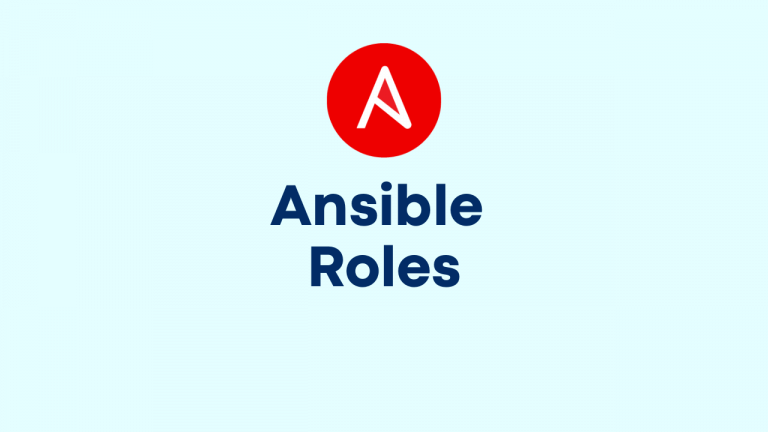An Ansible Role is essentially a structured way to break up playbooks into reusable components. Each role has a specific directory structure and contains files, tasks, templates, and handlers, allowing you to define how a particular configuration should be applied. Using roles ensures that tasks and configurations can be reused across different playbooks, making them easier to manage.
✅Benefits of Using Ansible Roles
- Modularity: Roles encapsulate a set of related tasks, making complex configurations simpler to understand.
- Reusability: Once created, a role can be reused across multiple playbooks and projects.
- Maintainability: Roles make it easier to modify and maintain Ansible code.
- Consistency: Roles help ensure that configurations are consistently applied across multiple servers or environments.
✅Ansible Role Directory Structure
Ansible expects a specific directory structure when creating roles. Here’s an example:

Each directory has a specific purpose:
- defaults/: Contains default variables, with the lowest precedence.
- files/: Used to store files that will be copied to managed nodes.
- handlers/: Holds handlers that can be triggered by tasks.
- meta/: Stores metadata, such as dependencies, author, and license.
- tasks/: Contains the main tasks for the role in a
main.ymlfile. - templates/: Holds Jinja2 templates that can be used to configure files dynamically.
- tests/: Optional, used to define test cases.
- vars/: Contains variables that override those in
defaults/.
Creating Ansible Roles
Let’s go through creating an Ansible role step-by-step.
↪️Step 1: Create the Role Directory
You can create a role directory manually or use the Ansible Galaxy command:

This command will create the structure described above under the my_role/ directory.
↪️Step 2: Define Tasks
In the tasks/ directory, create a main.yml file. This file contains the main set of tasks to be executed by the role. Here’s an example of a simple task that installs Apache:

↪️Step 3: Configure Handlers
Handlers are typically defined in the handlers/main.yml file. They respond to notify events triggered by tasks. For instance, you might want to restart Apache after modifying its configuration:

↪️Step 4: Add Templates
The templates/ folder is used for Jinja2 templates. Here’s an example template for an Apache configuration file:

This file can be referenced in the tasks/main.yml file:

↪️Step 5: Set Default Variables
The defaults/main.yml file allows you to set default variables that can be overridden later. For example:

Using Ansible Roles
Once a role is created, you can easily use it within a playbook. Here’s an example of how to use the my_role role in a playbook.

In this example, my_role is applied to the webservers group of hosts, and default variables (server_admin and document_root) are overridden.
✅Running the Playbook
To run the playbook, use the following command:

This command will execute all tasks in my_role across all hosts defined in the webservers inventory group.
✅Organizing Multiple Roles
You can include multiple roles in a playbook, making it easy to manage complex configurations:

This playbook will apply my_role and another_role to all hosts.
Ansible Roles provide a structured, modular, and reusable way to organize playbooks and manage complex configurations. By separating tasks, variables, templates, and handlers into distinct roles, you can create scalable and maintainable Ansible playbooks. Roles also make it easier to share configurations between projects, standardize deployment processes, and improve collaboration.
To further enhance your roles, you can leverage Ansible Galaxy for sharing and finding pre-built roles, speeding up your development process and ensuring best practices.
Happy coding🚀🚀🚀
We are happy to help https://synpass.pro/contactsynpass/ 🤝

